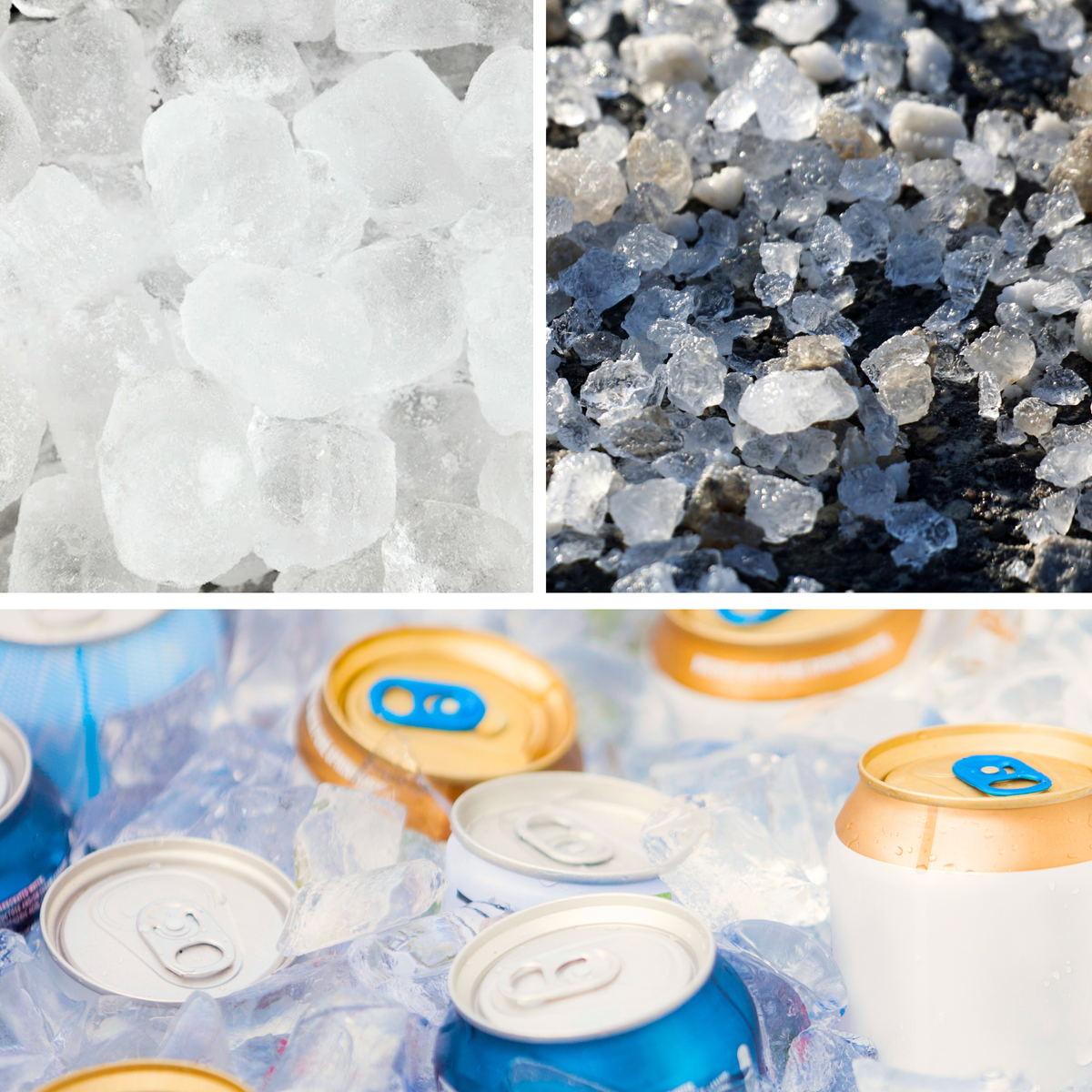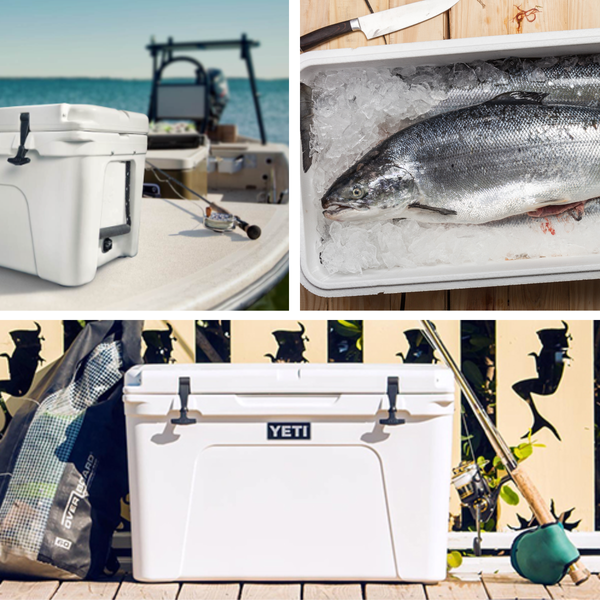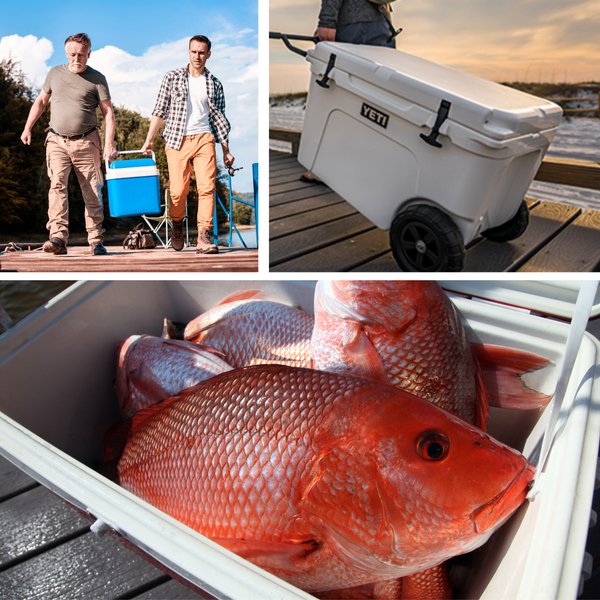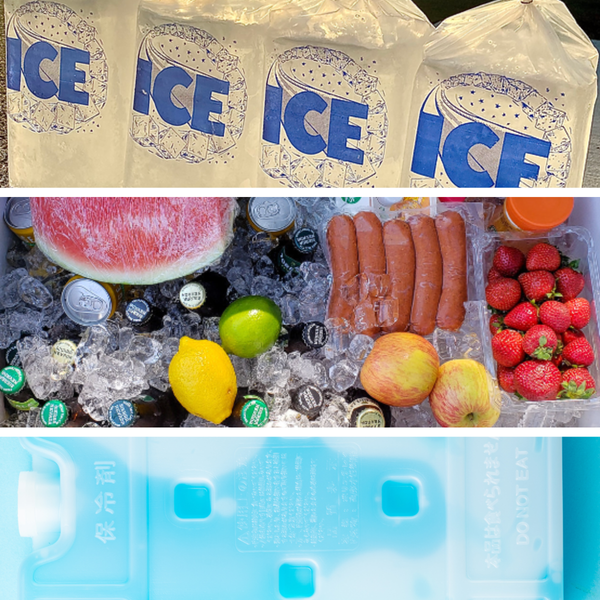Key Takeaways:
- Adding salt to ice can lower the freezing point, causing it to melt faster but also potentially making it colder for a short period.
- The effectiveness of salt on ice depends on the amount used and the environmental conditions.
- Understanding the science behind salt and ice can help in applications like preserving food in coolers or making homemade ice cream.
The Science of Salt and Ice
Have you ever wondered why we scatter salt on our driveways in the winter or why homemade ice cream recipes often call for rock salt? The answer lies in a simple chemical reaction that occurs when salt is added to ice. The phenomenon of salt melting ice is not just a handy winter trick but also a topic of interest for those looking to keep their coolers colder for longer.
When salt is introduced to ice, it disrupts the orderly arrangement of water molecules, effectively lowering the freezing point of the water. This means that ice will start to melt at a temperature lower than the standard 0°C (32°F). This process is known as freezing point depression. The salt essentially makes it so that the ice requires a colder environment to remain solid.
Practical Applications: Coolers and Ice Cream
In practical terms, this scientific principle has real-world applications. For instance, when packing an ice chest for a day out, some people might sprinkle salt over the ice in hopes of keeping their drinks colder for an extended period. Similarly, when making ice cream, the addition of rock salt to ice surrounding the cream mixture helps to lower the temperature, speeding up the freezing process and resulting in a smoother dessert.

However, it's important to note that while salt can make the immediate environment colder, it can melt ice faster. This is a crucial consideration when deciding whether or not to add salt to your ice chest. If you're looking for a short-term solution to get colder drinks quickly, salt might be beneficial. But for long-term cooling, it could be counterproductive.
The Chemistry Behind the Reaction
Delving deeper into the chemistry, when salt is added to ice, it dissolves into its constituent ions. These salt ions require energy to break free from the crystalline structure of the ice, which they absorb from the ice itself. This energy absorption is what causes the temperature to drop, as the ice loses heat to the surrounding salt solution.
The melting process initiated by the salt results in a brine that has a lower freezing point than pure water. This brine can remain in a liquid state at temperatures where regular ice would stay frozen. This is why salted roads remain clear of ice even when the temperature drops below the normal freezing point of water.
The Role of Concentration and Temperature
The effectiveness of salt in making ice last longer is not just a matter of tossing a handful onto your ice cubes. The concentration of the salt solution plays a significant role in determining the new freezing point. A higher concentration of salt will lower the freezing point more, but there is a limit to how much salt can be dissolved in water.
Temperature also plays a pivotal role. The initial temperature difference between the ice and the surrounding environment will influence how quickly the ice melts. In a cooler, for example, if the air space is filled with warm air, the ice will melt faster, regardless of whether salt is present. Conversely, if the cooler is pre-chilled, the ice, whether salted or not, will last longer.
Heat Transfer and Environmental Factors
Heat transfer is another critical factor in the how quickly water melts. Ice melts as it absorbs heat from its environment. When salt is added, the lower temperature of the ice-salt mixture can absorb more heat before it reaches the melting point. However, if the surrounding temperature is high enough, the ice will inevitably melt faster, salt or no salt.

Environmental factors such as humidity and wind speed can also affect how long ice lasts. Humid conditions can slow down the evaporation of the melting ice, which in turn can slow down the ice melting process. Wind, on the other hand, can carry away the cold air generated by the ice, potentially speeding up the melting if the ice is not insulated.
The Physics of Salt and Ice in Thermal Management
Understanding the physics behind how salt melts ice can be quite fascinating, especially when considering its implications in thermal management. The specific heat capacity of salted water is lower than that of fresh water, which means it requires less energy to increase its temperature (delta T). This principle is crucial in systems where maintaining a low temperature is essential. For example, in the industrial sector, salted ice water can be used to cool machinery more efficiently, preventing overheating and prolonging equipment life.
In the realm of cold stuff, like ice sculptures or temporary ice bars, the use of frozen salt water can make a noticeable difference. By carefully controlling the concentration of salt, sculptors can ensure their creations remain in a solid state for longer periods, even under the scrutiny of warm event lights. This technique not only extends the life of the ice art but also reduces the frequency of replacements, making the event more sustainable and cost-effective. The strategic use of salted ice in these scenarios showcases the versatility and practicality of this simple chemical reaction.
Salt and Ice: A Culinary Perspective
In the culinary world, the interaction between salt and ice opens up a realm of possibilities. Chefs and bartenders use salted ice to create stunning presentations and enhance the flavor of dishes and drinks. For example, a bed of salted ice can keep seafood like oysters and shrimp perfectly chilled, while subtly seasoning them. This not only preserves the delicate texture of the seafood but also adds a touch of brine that complements the natural flavors.
Additionally, the use of salted ice in the preparation of certain desserts, such as sorbets and granitas, can result in smoother ice crystals and a more refined texture. The controlled melting of ice by salt allows chefs to manipulate the freezing process, creating desserts that are both visually appealing and delicious. This technique showcases how a simple chemical reaction can elevate the art of cooking, providing a sensory experience that goes beyond taste to include the perfect temperature and texture.

Salt Types and Their Effects
Not all salts are created equal when it comes to melting ice. Rock salt, or halite, is commonly used for de-icing because it is cheap and effective. However, other types of salt like table salt or sea salt can also be used. The size of the salt grains can affect how quickly the salt dissolves and begins to lower the freezing point.
The choice of salt can also impact the taste of food items if the melting ice comes into contact with them. For instance, in an ice chest, using a salt that has additives could potentially alter the flavor of the food and drinks inside.
The Myth of Colder Ice
There's a common misconception that adding salt to ice can somehow make the ice itself colder. In reality, what happens is that the salt lowers the temperature at which the ice-water mixture remains in a liquid state. The ice doesn't get colder; instead, the melting ice creates a colder brine that can absorb more heat from its surroundings.
This distinction is important because it affects how we perceive the effectiveness of salt in keeping things cold. While the immediate area around the salted ice may feel colder, the ice itself is undergoing a faster transition to a liquid state.
Salt and Ice Experiment: A Closer Look
The salt and ice experiment is a popular science activity that demonstrates the effects of salt on the melting rate of ice. By adding different amounts of salt to separate ice cubes and measuring how long it takes for them to melt, one can observe the relationship between salt concentration and the melting rate.
This experiment can also show the temperature difference created by the salt and ice mixture. Using a thermometer, one can measure the temperature of the brine, which will often be lower than the initial temperature of the ice before salt was added.

Preserving Food with Salted Ice
When it comes to preserving food in coolers, the goal is to keep the ice solid for as long as possible. Adding salt to the ice in a cooler can create a colder environment initially, which can help to quickly chill food and drinks. However, because the salt accelerates the melting process, it may not be the best strategy for long-term storage.
For those looking to keep food frozen or chilled for extended periods, using block ice rather than ice cubes can be more effective. Block ice has a smaller surface area compared to the same volume of ice cubes, which means it melts more slowly. Adding salt to block ice may lower the temperature initially but will also hasten its eventual melting.
The Impact on Homemade Ice Cream
Making ice cream at home often involves a mixture of ice and rock salt. The salt lowers the freezing point of the ice, allowing the mixture around the ice cream to get colder without solidifying. This creates an ideal environment for the ice cream mixture to freeze while being churned, resulting in a creamy texture.
The amount of salt used can affect the freezing rate and the final texture of the ice cream. Too much salt can cause the ice cream to freeze too quickly, leading to a grainy texture, while too little may not freeze the mixture sufficiently.
Balancing Salt for Optimal Cooling
Finding the right balance of salt to ice is key to optimizing the cooling effect. Enough salt needs to be added to lower the temperature of the ice-water mixture, but not so much that the ice melts too quickly. This balance will vary depending on the intended use, whether it's for a cooler or for making ice cream.
For coolers, a moderate amount of salt can be added to quickly chill the contents, followed by regular ice to maintain the low temperature. For ice cream, the salt concentration needs to be high enough to lower the freezing point without completely melting the ice.

Innovative Uses of Salted Ice in Everyday Life
Incorporating salted ice into our daily routines can lead to some clever and practical solutions. For instance, when you fill bottles with a mixture of salt and water before freezing, you create a reusable ice pack that stays colder for longer periods. This is because adding salt lowers the freezing temperature of the water, allowing the ice to remain frozen even in slightly warmer conditions. These DIY ice packs are perfect for lunchboxes or to soothe minor injuries, providing extended cold therapy without the mess of melting ice.
Moreover, salted ice can play a significant role in outdoor activities. Campers and hikers have long known that adding a pinch of salt to their ice-filled coolers can keep their provisions chilled for extended periods. This is particularly useful for multi-day trips where access to fresh ice is limited. The salted water mixture creates a colder environment within the cooler, ensuring that food and beverages stay fresh and more ice is preserved for future use. This simple trick can make a significant difference in the quality of your outdoor adventures.
Moreover, salted ice can be a game-changer for athletes or individuals who need quick muscle recovery. A bath with ice and salt can create a cold water plunge that helps reduce inflammation and speed up recovery time. This technique, often used by professional athletes, can be adapted at home with a simple mixture of ice, water, and salt. The salt allows the ice to melt slowly, maintaining a consistent cold temperature that is ideal for therapeutic purposes.

Summary
In conclusion, does putting salt on ice make it last longer? The answer is nuanced. While salt can create a colder environment by lowering the freezing point of water, it also accelerates the melting process of ice. The key to using salt effectively is to understand the balance between the desired temperature and the longevity of the ice. For short-term cooling, salt can be beneficial, but for long-term preservation, it may not be the best approach. Understanding the science behind salt and ice can help you make informed decisions for various applications, from packing a cooler to making homemade ice cream.
FAQ Section
Q: How does salt make ice colder?
A: Salt doesn't make the ice itself colder. Instead, it lowers the freezing point of the water, which allows the ice-water mixture to become colder without the ice turning into a solid block. This colder mixture can absorb more heat from the surroundings.
Q: Can I use any type of salt to make ice last longer?
A: Different types of salt can be used, but rock salt is commonly preferred for making ice last longer due to its larger grain size and effectiveness in lowering the freezing point. Table salt and sea salt can also be used but may dissolve more quickly.
Q: Is there a downside to using salt on ice in a cooler?
A: The downside is that while salt can make the contents of a cooler colder more quickly, it also causes the ice to melt faster. This means that for long-term cooling, the ice will not last as long as it would without salt.










